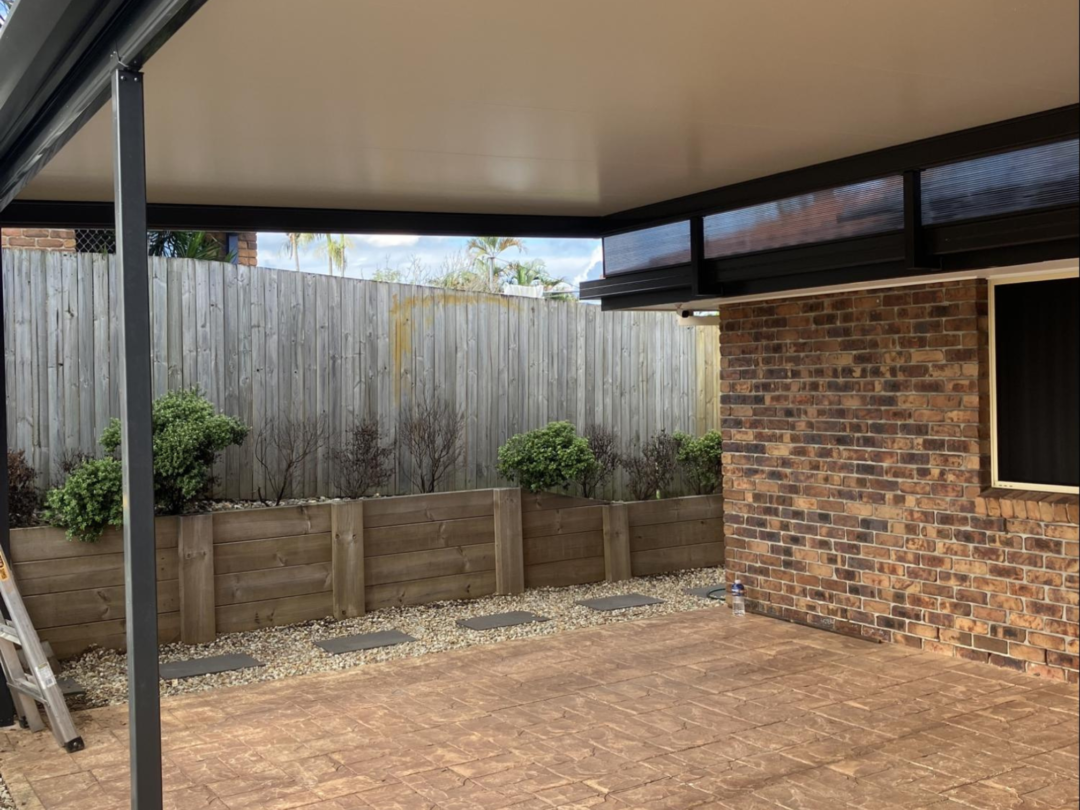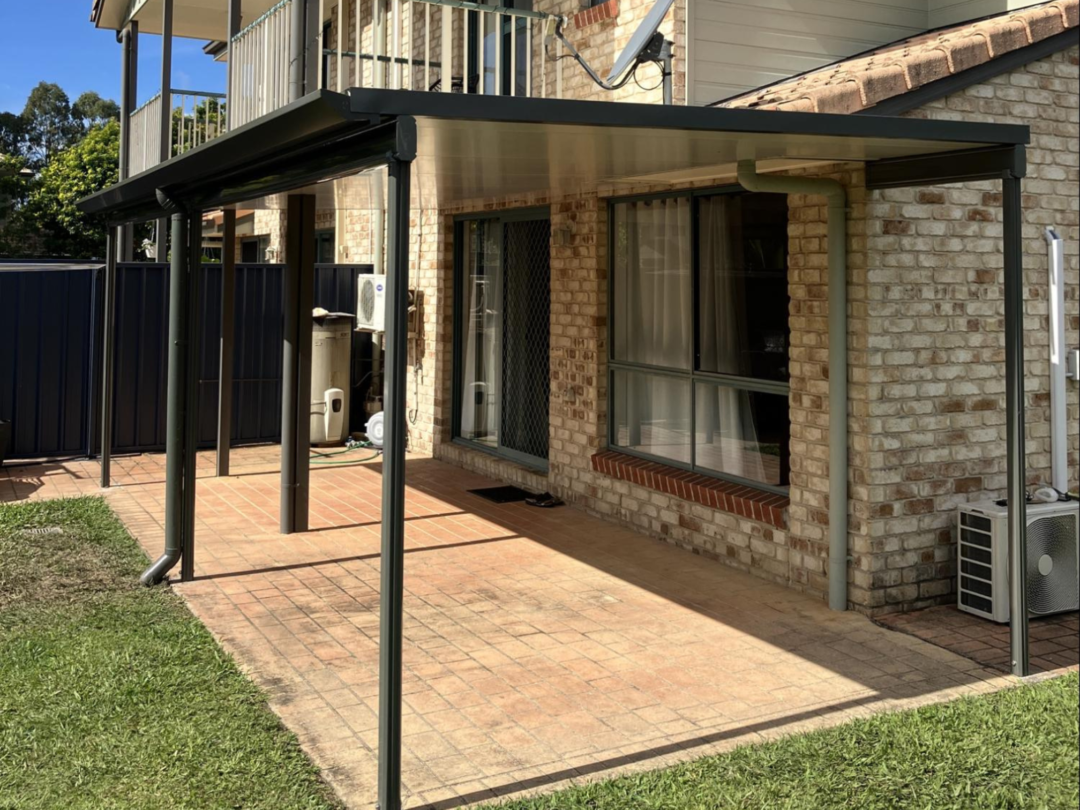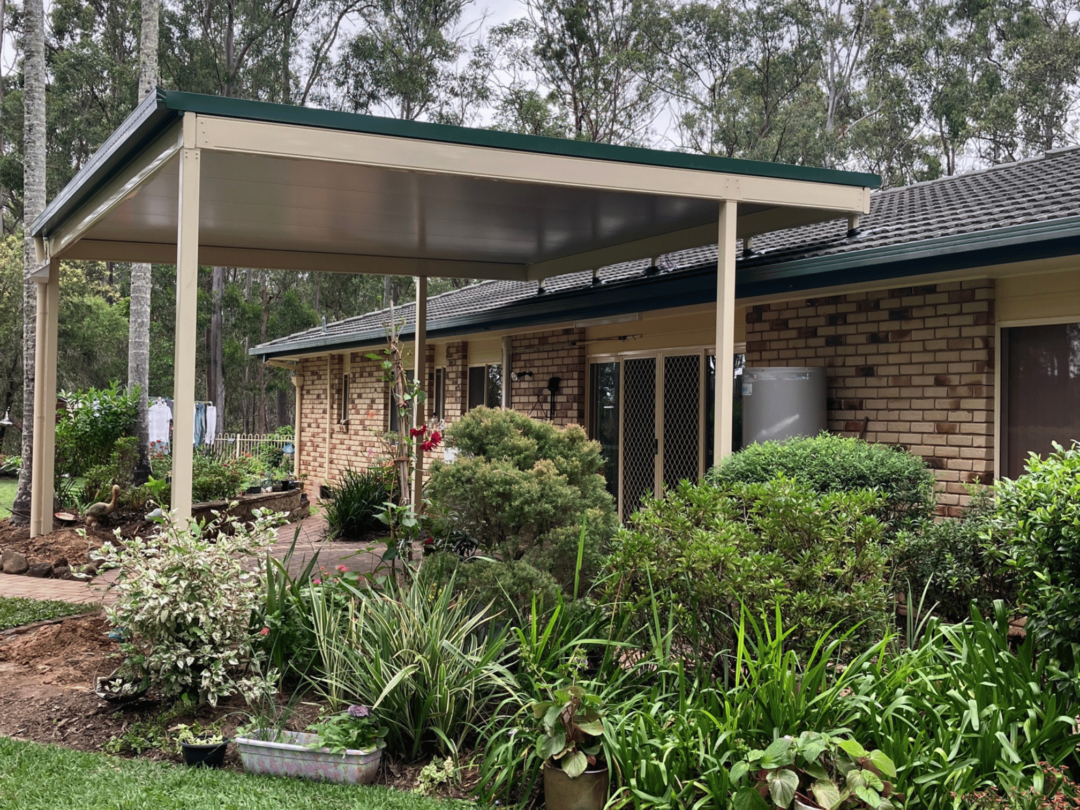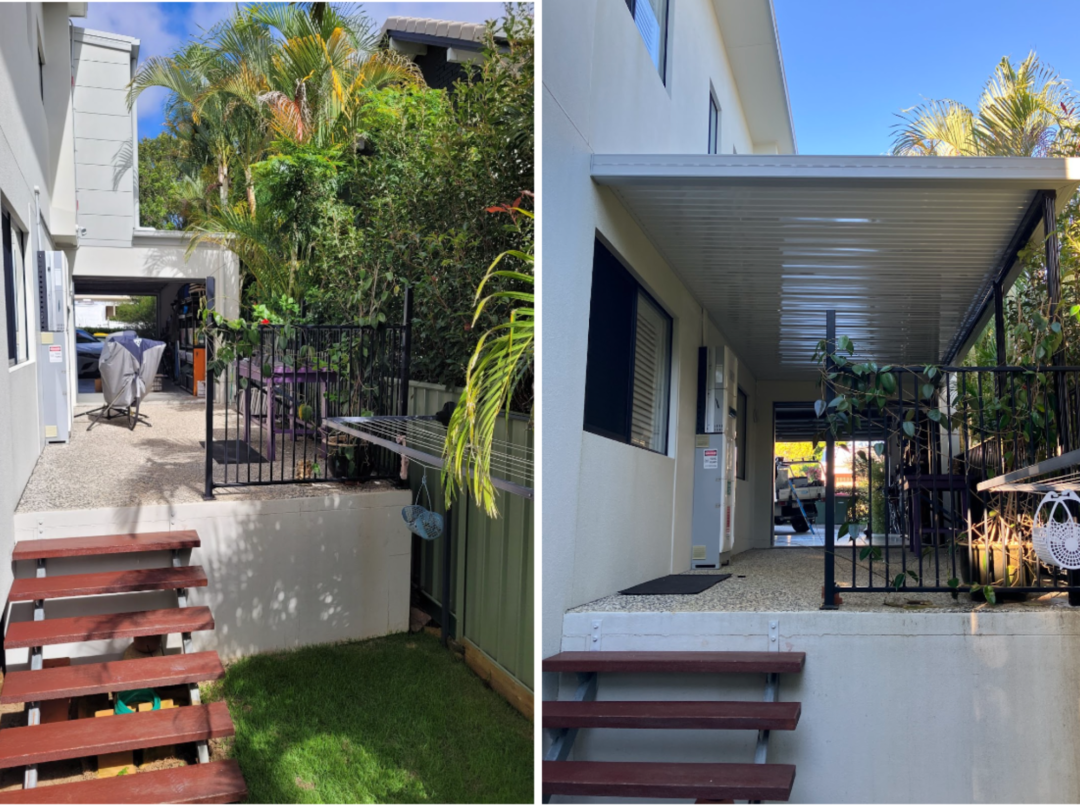The job of building a patio cover doesn’t stop once the roof is installed. There are plenty of other jobs that need to be done, one of which is drainage, which is often overlooked by DIYers. Effective drainage is not an afterthought. It’s a topic that requires critical attention as soon as the initial plans are drawn up.
Drainage solutions aren’t something that can just be tacked on at the end. Without proper drainage, you may end up with a patio that overflows, leaks or lets water pool up on the deck. A properly functioning drainage system ensures you can enjoy your patio without getting wet, regardless of the weather. Given the importance of drainage in patio cover installation, it’s advisable to enlist the expertise of professionals to handle the project.
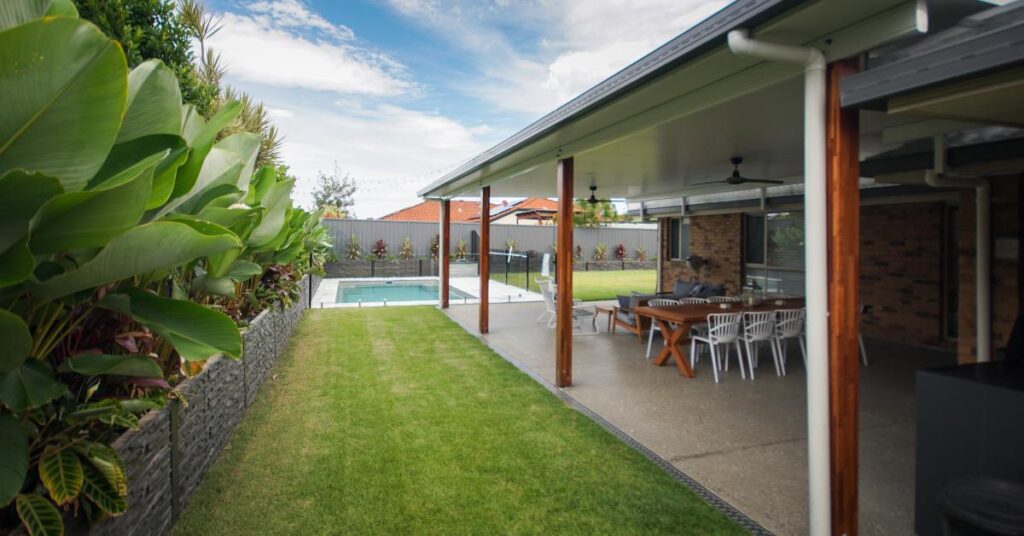
Why Proper Drainage Is Crucial for Patios
Proper drainage is crucial for any patio. Without it, rain and excess water have nowhere to go, leading to damage, flooding, and unsafe conditions.
Prevent Standing Water
Standing water attracts mosquitoes and other pests, not to mention it’s a slipping hazard. Patio roofs (even flat ones) need to be slightly sloped so water can run off into the gutters. It is also a good idea to install drains or grates in low-lying areas.
Water Stains
Dark stains on your patio, steps or walkways indicate water damage. As water penetrates the surface, it carries dirt and debris that get trapped, leaving behind unsightly marks. Water stains also mean water is soaking into and weakening the structure.
Mould or Algae
The damp, shady spots on your patio are perfect environments for mould, algae and moss to thrive. Not only are they ugly, but they can also be difficult to remove once established and may damage your patio surface.
Foundation Cracks
Poor drainage can cause structural damage to your patio in the form of cracks, warping, and even damage to the slab underneath. As water collects and seeps below the surface, it erodes and shifts the base, causing slabs and stones to become uneven, separate and crack.
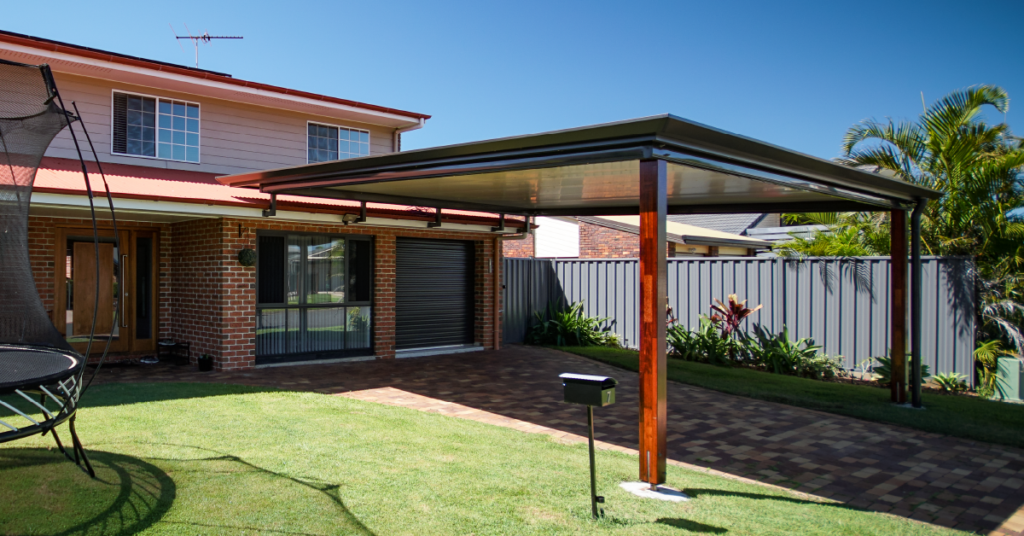
Patio Drainage Requirements
In Queensland, proper drainage for structures like patios is a critical aspect of construction to prevent issues such as water accumulation, flooding, and damage to the property or neighbouring properties.
Building codes vary from council to council, but they often include specific requirements for drainage systems to manage rainwater appropriately. This may involve the installation of gutters, downspouts, and drainage channels to direct water away from the structure and prevent water-related issues.
For the most accurate data, we recommend contacting your local council. If you’re in the SEQ region, let SEQ Patio Group handle all the work for you. We’ve been building patios in the Brisbane area for decades, and we understand all the ins and outs of drainage requirements for outdoor structures. Save yourself some time on the phone with the council and give us a buzz today!
Do Patio Cover Builders Include Drainage?
SEQ Patio Group takes pride in delivering high-quality patio covers that not only enhance the aesthetic appeal of outdoor spaces but also adhere to stringent drainage requirements and are built to withstand the diverse weather conditions of Queensland. Our expert installation team meticulously follows local building codes and regulations to ensure proper drainage systems are integrated seamlessly into every patio cover project. We prioritise the use of durable materials and innovative design techniques that effectively manage rainwater runoff, preventing potential issues like water accumulation and structural damage. The patio covers we install are specifically crafted to handle the challenging weather patterns of Queensland, including heavy rainfall and intense sunlight. With a commitment to both functionality and aesthetics, SEQ Patio Group offers durable and visually appealing solutions that provide a comfortable and protected outdoor space for our clients, no matter the weather conditions.
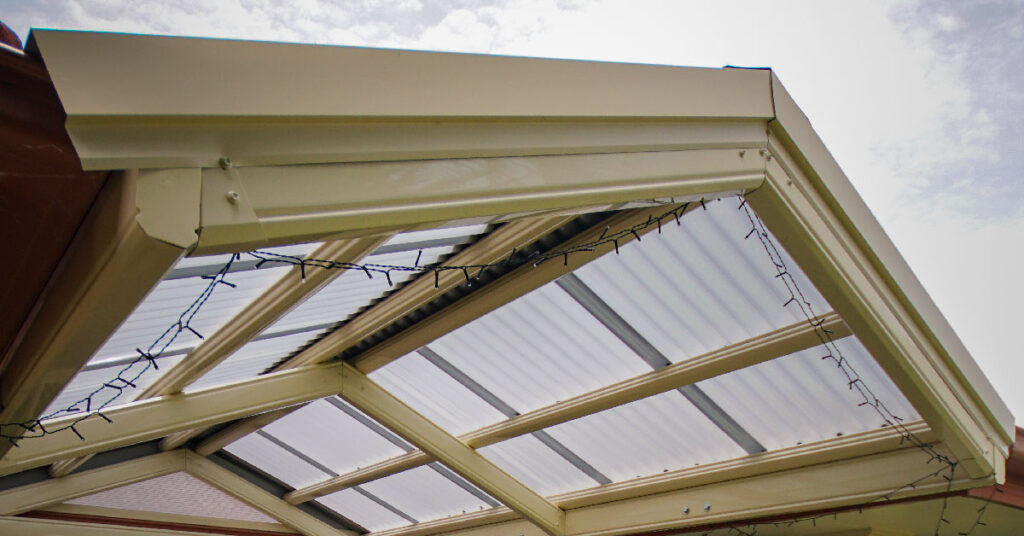
Patio Drainage System Options
When it comes to keeping excess water off your patio, you have a few good options to consider:
Gutters and downspouts: Gutters are the most standard system to divert rainwater from the patio roof. Gutters are attached along the edges of the patio roof to collect water and downspouts to carry the water away from the foundation.
Slopes: For concrete or paver patios, the ideal slope is 1/4 inch per foot. This means if your patio is 12 feet wide, the elevation should drop 3 inches from one side to the other. A slope will allow water to run off the surface instead of pooling.
Drainage channel: For ground drainage, a trench or channel along the edges of the patio is a great investment. A channel, sometimes called a swale, is a u-shaped ditch that gives water a path to flow away from the patio. You can dig a channel in the soil or use pre-made plastic or concrete drainage channels.
Permeable ground material: Impermeable materials such as concrete inhibit water absorption into the ground, while permeable options like pavers, gravel, or porous concrete allow for drainage while maintaining a solid surface. If gravel isn’t your preference for patio flooring, incorporating features like sand or gravel in specific backyard areas still provides the benefits of enhanced drainage, preventing yard flooding by allowing the soil to absorb more moisture.
So there you have it, a few simple solutions to keep your patio dry and usable all year round. A professional patio builder will ensure all gutters and downspouts are installed and your drainage system works perfectly with your home. Enjoy your yard no matter what the weather looks like with a patio cover that will keep you dry and safe through wild weather.





